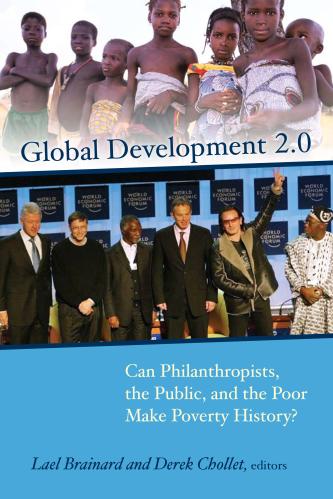Policymakers and Africa watchers continue to cite the youth employment challenge in Africa as one of the most pressing issues facing the continent. Notably, recent research indicates that the youth employment problem is not the high unemployment one found in the Middle East or Southern Europe, but rather a problem of the quality of employment opportunities available.
At the beginning of this decade, African employment was overwhelmingly informal, mostly in household farms and microbusinesses. Informal sector work—including self-employment and contributing family workers—is less desirable than wage work, as earnings are usually lower and always more uncertain, working conditions are often worse, and social protection is minimal at best. Employment transformation—where the share of employment in the informal sector falls and the share in wage work rises owing to an increase in the number of firms in the economy—is critical to improving the quality of employment opportunities.
Experts hoped that, as the region recorded an extended spell of high income growth, employment transformation would accelerate. In fact, over the first five years of the decade, most African countries experienced high income growth (in GDP terms, over 5 percent per annum), and countries not negatively affected by falling mineral prices (non-resource-rich countries) continued to grow at nearly that pace until this year, when growth slipped slightly (see graph 1.27 in Africa’s Pulse). Lower-middle-income resource-rich countries, especially Angola and Nigeria, registered much worse growth performances beginning in 2015 as the effects of the secular decline in oil prices manifested.
Did this high growth in income help ease Africa’s employment challenges?
In some countries that today are lower-middle-income (LMI) status, the answer seems to be yes.
Figure 1 shows the structure of employment for African countries that are classified as low income today (per World Bank 2019 income classifications)—untransformed, with lots of informal (household production) employment.
Figure 1: Employment structure in low-income African countries
What about countries that grew enough to move into the lower-middle-income category?
Did that income growth transform the structure of employment in African countries uniformly?
It seems that the answer to this question is in some cases, yes, and in others, no. We separate Africa’s LMI countries into resource rich (countries where minerals account for 50 percent or more of a country’s exports) and non-resource rich. Notably, Figures 2a and 2b shows that for those sub-Saharan African countries without mineral exports that managed to make it into the LMI group by 2019, the structure of employment did change—the transformation started.
Figure 2: Employment structure in lower-middle-income countries
2a: Non-resource-rich countries
2b: Resource-rich countries
Wage employment expanded as more firms employing more people were created. As a result, household production now only accounts for 60 percent of employment on average in these countries, compared with 80 percent in the low-income countries. Data from the few countries that report it suggest that about half of the wage employment is casual or informal, but over two-thirds is in the private sector—reflecting an increasingly sustainable pattern compared with one dominated by public-sector employment.
In resource-rich countries, by contrast, the structure of employment has hardly transformed. New wage employment has not been created, and the share of employers in the labor force has not expanded. Even worse, two-thirds of wage employment in these countries is in the public sector—a less sustainable pattern, especially as fiscal space contracts with failing mineral prices.
Foresight Africa 2019 offered some proposals for increasing the quality of employment, including stimulating private investment in sectors with high employment and competitiveness potential—labeled “industries without smokestacks”—and leveraging technology to improve business opportunities and to efficiently develop the skills needed to implement the needed economic change. The analysis of progress on employment transformation I offer here indicates that, for those countries not afflicted by the “resource curse,” these strategies—if implemented effectively—could bring noticeable progress, advancing a nascent transformation. But for Africa’s resource-rich countries, including two of Africa’s largest economies (Nigeria and Angola), these strategies seem unlikely to be enough, or even to have much success at all.
Unfortunately, the resource curse in Africa continues. The real question for the future is: What will happen in Africa’s LMI countries that have recently entered or are entering the resource-rich club (e.g., Ghana, Senegal, Kenya, Côte d’Ivoire)? Will their employment prospects worsen, or can they escape the resource curse?
For more on the challenges and consequences around the region’s youth employment problem, see the January 2019 issue of Foresight Africa, where the Brookings Africa Growth Initiative highlighted youth employment as one of six core issues facing Africa’s leaders this year and in the near future. You can also see my co-authored 2014 book for the World Bank on the topic.
Note: Brookings AGI Senior Research Analyst Dhruv Gandhi contributed to this post.
The Brookings Institution is committed to quality, independence, and impact.
We are supported by a diverse array of funders. In line with our values and policies, each Brookings publication represents the sole views of its author(s).













Commentary
Income growth seems to be associated with a more rapid employment transition in Africa, unless you are a mineral exporter
December 17, 2019